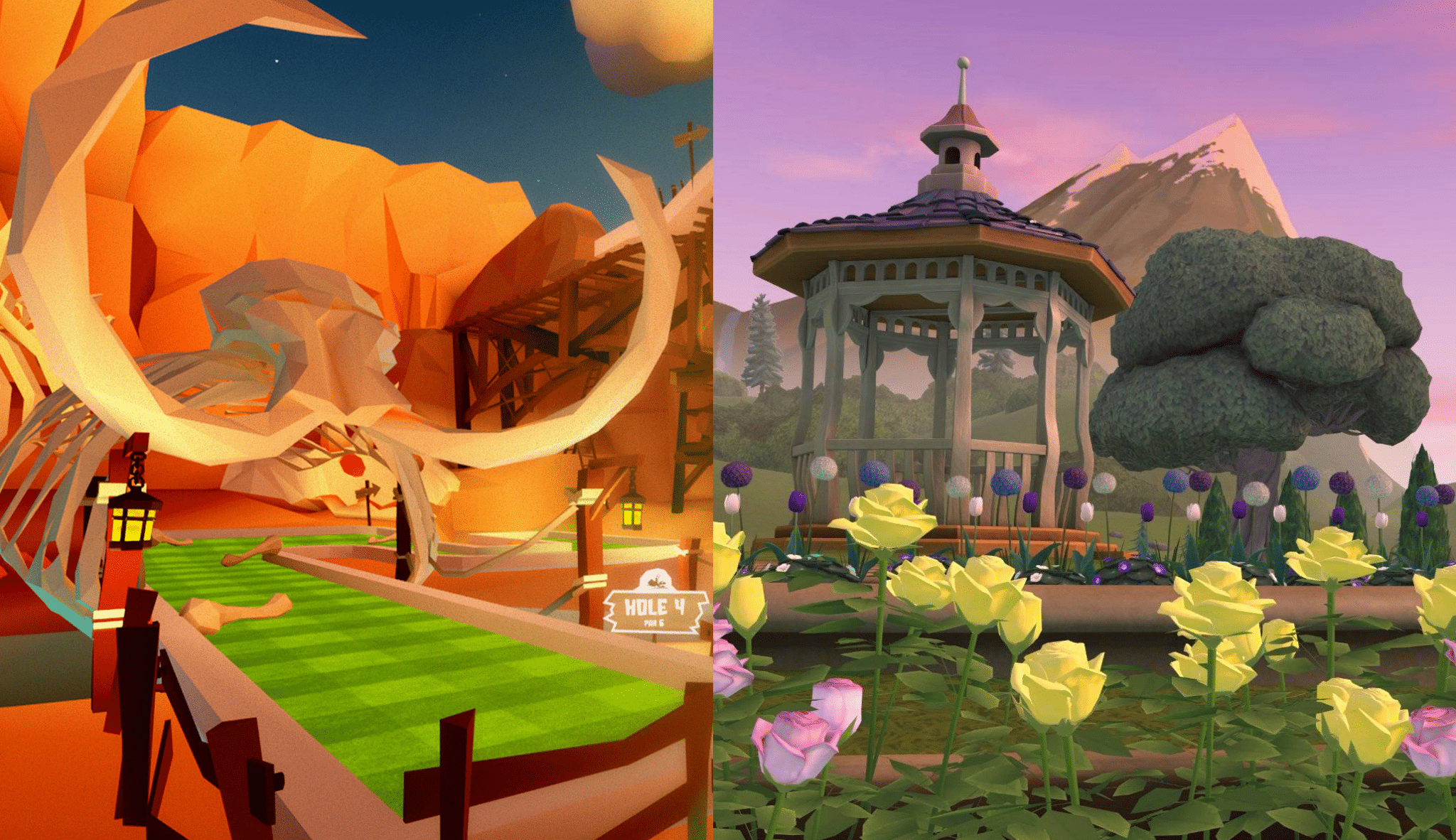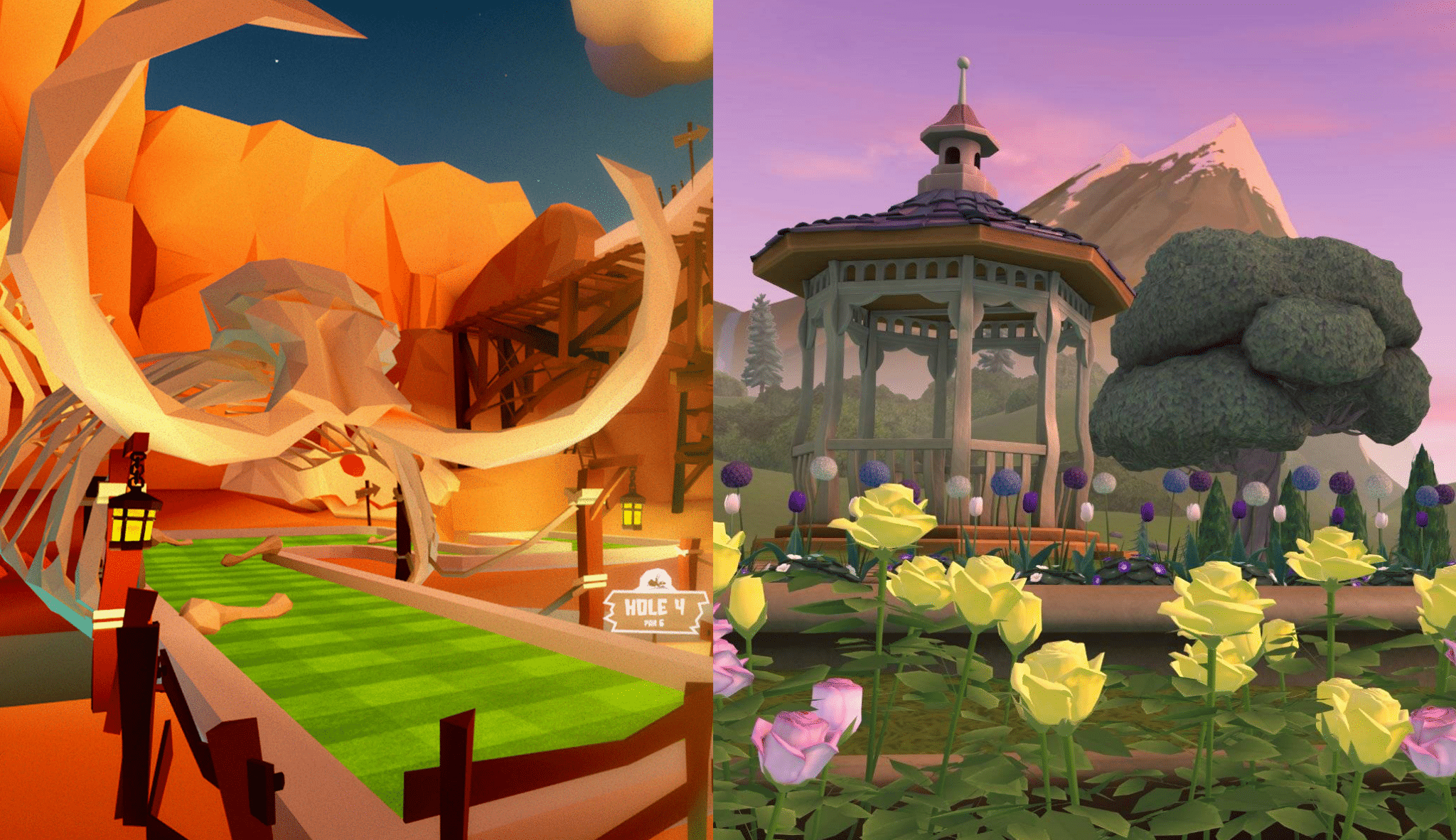
I visited the exact same world from both Meta Quest 3 and Apple Vision Pro.
Built from just 431 lines of HTML, immersive-hands.html is an example of one of VR’s truly cross-compatible destinations demonstrating the ultimate promise of WebXR. For those unfamiliar, WebXR is a standard for Web browsers like Safari and the Meta Quest Browser allowing them to display fully immersive worlds in VR mode.
Meta’s support is turned on automatically for Quest headsets and in Vision Pro, on visionOS 1.1, I turned on Apple’s early version of this feature by visiting an advanced menu in the settings app. If you happen to be reading this in a Vision Pro with WebXR turned on, or in another headset like Pico or Quest, you can visit this URL sample to try it out for yourself.
For those of you outside VR or unwilling to make the quick trip over to the sample – here’s what immersive-hands.html looks like on Apple Vision Pro:
And on Meta Quest 3:
There’s a number of other WebXR samples and sites to investigate, but not all appeared to work on Apple Vision Pro right now. Some websites we’ve previously tested on Quest appeared to have been redirected or taken down, another looked for tracked controllers but didn’t find any on Vision Pro, and another crashed the Safari browser window.
These Open-Source Demos Prove WebXR Could Be Used For Full VR Games
Two open-source demos show WebXR could be used to make full-fledged games. WebXR is an open standard API that enables webpages to display immersive content on headsets that tracked controllers can interact with. WebXR experiences use WebGL for rendering, which is based on OpenGL ES. You can access WebXR apps

Still, seeing features like hand tracking available to a single world in both Vision Pro and Quest is an interesting moment for WebXR. Some Web engineers have been dreaming of this sort of thing for decades and, while impressive, this is still just the beginning of VR in browsers.
It’s a promising start, though, and if you know of any innovations happening in the WebXR space please email tips@uploadvr.com or use our Contact Us page to reach out.






